 Mysteries
Mysteries  Mysteries
Mysteries  History
History 10 Surprising Stories About the Texas Rangers
 Humans
Humans 10 Philosophers Who Were Driven Mad by Their Own Theories
 Miscellaneous
Miscellaneous 10 Video-Game-Worthy Weapons and Armors from History
 Weird Stuff
Weird Stuff 10 Psychics Who Accurately Predicted Wartime Events
 The Arts
The Arts 10 Pieces of Art Inspired by a Broken Heart
 Health
Health 10 Science Fiction-Sounding New Medical Treatments
 History
History 10 Surprising Facts About the Father of Submarine Warfare
 Space
Space Ten Astonishing New Insights into Alien Worlds
 Weird Stuff
Weird Stuff 10 Bizarre Summer Solstice Rituals Still Practiced Today
 Mysteries
Mysteries Top 10 Haunting Facts About the Ghost Ship MV Alta
 History
History 10 Surprising Stories About the Texas Rangers
 Humans
Humans 10 Philosophers Who Were Driven Mad by Their Own Theories
Who's Behind Listverse?

Jamie Frater
Head Editor
Jamie founded Listverse due to an insatiable desire to share fascinating, obscure, and bizarre facts. He has been a guest speaker on numerous national radio and television stations and is a five time published author.
More About Us Miscellaneous
Miscellaneous 10 Video-Game-Worthy Weapons and Armors from History
 Weird Stuff
Weird Stuff 10 Psychics Who Accurately Predicted Wartime Events
 The Arts
The Arts 10 Pieces of Art Inspired by a Broken Heart
 Health
Health 10 Science Fiction-Sounding New Medical Treatments
 History
History 10 Surprising Facts About the Father of Submarine Warfare
 Space
Space Ten Astonishing New Insights into Alien Worlds
 Weird Stuff
Weird Stuff 10 Bizarre Summer Solstice Rituals Still Practiced Today
10 Nonconsensual Experiments That Led To Medical Advancements
There is a very thin line—one that’s easy to cross and even easier to blur in the field of medicine—where ethical experimentation and the malicious pursuit of knowledge through unethical means meet and perhaps even overlap. What is ethical science in the world of human subjects, and who’s to be the judge of that?
Is consent all that’s really needed for an experiment to be considered humane, and if so, how much consent? How many of the details does a patient need to know to reach the threshold of doctors safely saying that consent was, in fact, informed consent?
Throughout history, this line has been crossed many times, much to the tragic dismay, torture, and even death of some of the so-called patients who’ve been experimented on. There have been great breakthroughs in medical science through experimentation on living human beings, but at what cost?
Sometimes, tests were conducted upon individuals without their knowledge that they were the subjects of an experiment. Here are 10 such cases that led to medical breakthroughs.
10 Influenza
1941
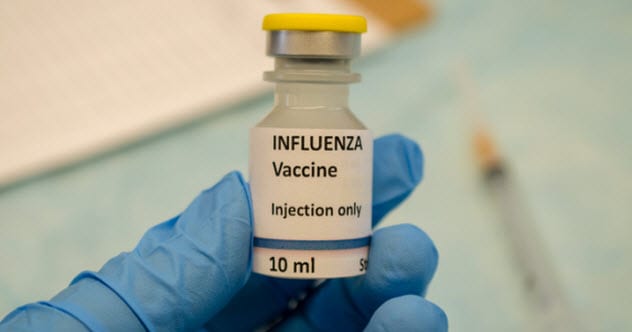
Nobody likes getting the flu. It comes along when we least expect it, infecting us and making us sick for days or even weeks, sometimes leaving us bedridden for extended periods of time. But imagine getting the flu unsuspectingly and then finding out that someone had administered it to you. Well, that’s exactly what happened in the United States from 1941 onward in the name of experimentation.
Thomas Francis Jr., the microbiologist who originally isolated the viruses known as influenza A and B, conducted some of these experiments in 1941 on institutionalized persons, including children. Many of the experiments were conducted using people who’d become property of the state or were otherwise in mental asylums.
Francis didn’t tell them that he was spraying his recently isolated flu virus up their noses when he gave them a nasal spray. Even more terrifying, when the medical community found out about it, they seemed to think that the ends justified the means. The dominant ideology of the day was that it was perfectly okay to subject unwitting people to diseases and medical mistreatment as long as the research led to breakthroughs.[1]
These tests paved the way for a greater understanding of influenza as a series of viruses and led to vaccines, many of which protected US troops during World War II.
9 Gynecology
 Gynecology is a science that has a history replete with unethical tests and especially surgeries on subjects. What a nightmarish thought it is to be strapped or forced down while someone performs a surgery on you without your consent as you struggle to break free.
Gynecology is a science that has a history replete with unethical tests and especially surgeries on subjects. What a nightmarish thought it is to be strapped or forced down while someone performs a surgery on you without your consent as you struggle to break free.
James Marion Sims was a surgeon and scientist who’s often credited as being “the father of modern gynecology.” The ways he came to his conclusions in medicine were rather striking.
His experiments took place in the 1840s in the United States when slavery was still legal. They were conducted without anesthesia almost exclusively on enslaved women who hadn’t given consent. Extremely painful surgeries were performed on helpless women who couldn’t legally say no.
Through these methods, Sims invented all sorts of dilators which opened the vagina, especially to treat vaginal fistulas, abscesses, or openings that connect one organ to another unnaturally. He forced his various instruments on unwitting women in the name of science and sadly paved the way for a lot of gynecological work as we know it today.
If anything, these faceless women who suffered at the hands of medical experimentation should be called “the mothers of modern gynecology” rather than giving James Marion Sims a similar title.[2]
8 Spinal Taps

Back in 1896, we didn’t quite yet know whether spinal taps would be harmful procedures with short-term or long-term effects. Thus, some tests needed to be done. In one of the most twisted cases of medical experimentation, a doctor by the name of Arthur Wentworth stepped up to the plate.
He performed spinal taps on 29 children to test the safety of the procedure. Obviously, these children could not consent, and some argued that the kids weren’t even sick. Even for that time, people were outraged that a doctor was using children to test the safety of a new surgical procedure.
Even worse, it was immediately alleged that Wentworth didn’t even gather consent from the parents, who also didn’t know that their children would be used to study the effectiveness of spinal taps. But it’s certain that Wentworth was instrumental in pioneering many modern surgical procedures, such as the lumbar puncture which is still used today.[3]
His supporters at the time claimed that the ends justified the means, while his opponents were mortified.
7 San Quentin
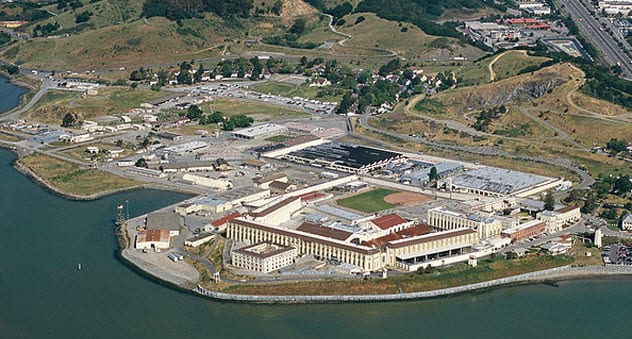
San Quentin is a prison in Northern California near San Francisco. It became the place that would facilitate one of the worst cases of experimentation on living, non-consenting subjects in history. These nightmarish tests were conducted by Leo Stanley, who served as the chief medical surgeon for the prison from 1913 to 1951. Stanley brought about some medical advancements in an extremely unorthodox way. In fact, he taught us exactly what not to do.
During his tenure, Stanley was obsessed with the genitals of men. He fixated on Hitler-like eugenics, hated homosexuality, thought that white Christians were the superior race, and thus advocated the active sterilization of the rest.
In some of the most evil experiments in world history, Stanley took the testicles from deceased prisoners and grafted them into living ones. Even more disturbing, Stanley sometimes transplanted animal testicles into living people.[4]
His experiments affected countless men over decades and were his search for a more “vital” man through regulating testosterone production. This was the forerunner to modern hormone therapy before they got the chemistry figured out.
Ultimately, Stanley advanced the field of medicine by giving an undeniable example of the need for more oversight in the medical facilities within prison walls. For the longest time, many people like Leo Stanley were able to operate unhindered as long as they conducted their bizarre experiments on prisoners. He helped to give us a reason to usher in the new area of medical ethics for those who’ve been imprisoned.
6 Tuskegee Experiment
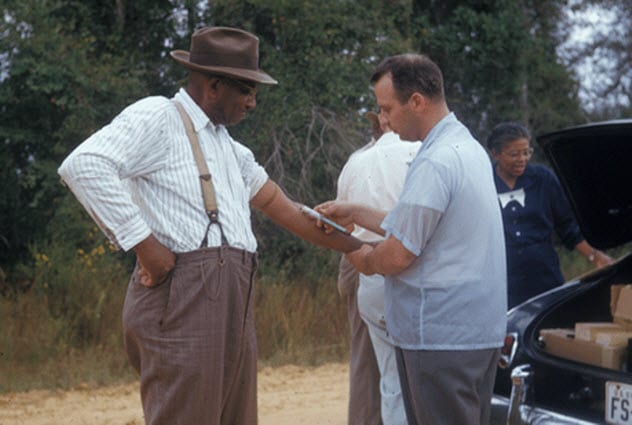
The Tuskegee experiment is another long-standing, unethical, horrifying case of medical science gone wrong. An idea that was already morally awful in theory became tremendously worse in practice.
Beginning in 1932, the experiment sought to identify the stages of syphilis and how to treat them as there was no known cure at the time. It was the era of the Jim Crow laws in the United States. Technically, African Americans had been freed from slavery, but racism and horrible treatment was still very much alive and well as proven by the Tuskegee experiment.
The study was performed on a large group of African-American men who had contracted syphilis and another group who had not. The researchers intentionally gave syphilis to the group who was initially free of the disease and observed the results.
Before this, the major known work on syphilis was a Norwegian study conducted in Oslo, Norway, in 1928. But this research only used people who’d already contracted the disease, not patients who were newly infected with it.
So the Tuskegee study sought to complement the Oslo research. Of course, the major problem with Tuskegee was that they did not obtain the consent of those in the study and didn’t even tell them what was happening.[5]
Before it had even begun, the study lost its funding with the stock market crash of 1929. The researchers decided to go through with it anyway and promised free medical treatment and food to those who participated.
But the free medical treatment never came. They just left the subjects to get progressively worse. The study went on for 40 years until a whistle-blower discovered it and leaked the information to a reporter. By 1972, everyone knew what was happening.
While horribly unethical, much of our knowledge of the ever-changing syphilis infection comes from the research done over this 40-year period as, oddly enough, the researchers never actually tried to hide what they were doing. They published their findings for the medical community.
We now know well the stages of syphilis from beginning to end. Our knowledge of a terrible disease was greatly advanced but at a tragic and deeply unethical cost.
5 Hepatitis
1947

In 1947, a rather disgusting study on the spread and control of the hepatitis virus was conducted by Dr. Joseph Stokes Jr., who gathered test subjects and fed them. However, he didn’t tell them exactly what he was feeding them.
In another example of plainly cruel medical research, Stokes gave participants chocolate milkshakes without telling them that the shakes had been mixed in a blender with livers containing the hepatitis virus. Feces containing the virus were also blended into the milkshakes.
The subjects were prisoners with no history of jaundice or presence of the hepatitis virus. So Stokes intentionally infected otherwise healthy people without their knowledge. As a result, he gave hepatitis to them and likely many other prisoners after the original patients returned to the general prison population, thus allowing the disease to spread.
In 1950, Stokes performed more experiments by intentionally giving 200 female prisoners hepatitis to further study the virus.
His work led to some advancements in our understanding of the hepatitis virus, namely how to control the disease and that having one type of hepatitis doesn’t protect someone from contracting another type. In fact, Stokes discovered that having one type of the virus increased the likelihood that a person would contract another type of hepatitis. But this knowledge came at a horrible cost.[6]
4 MK-ULTRA
 MK-ULTRA was a series of experiments conducted by the CIA to test many different things—from electric shock therapy to the effects of drugs. The premise was to discover or counteract means of controlling the mind, especially those of military prisoners.
MK-ULTRA was a series of experiments conducted by the CIA to test many different things—from electric shock therapy to the effects of drugs. The premise was to discover or counteract means of controlling the mind, especially those of military prisoners.
The studies were conducted between 1953 and 1973. Among other things, they included dosing unsuspecting people with LSD to see how they would react. The unknowing subjects were at bars or the beach when researchers dropped drugs in their drinks and then observed their reactions. It was like date rape without the rape but with all the nightmarish psychological torture.
The CIA even dosed its own agents without their knowledge. One of their top scientists died when he was drugged without his knowledge and fell from a hotel building.[7]
Though much of the documentation was destroyed, most major advancements in our knowledge of illegal drugs such as MDMA and especially LSD came from these horrific experiments that claimed lives and caused permanent damage in people who survived.
3 Acres Of Skin
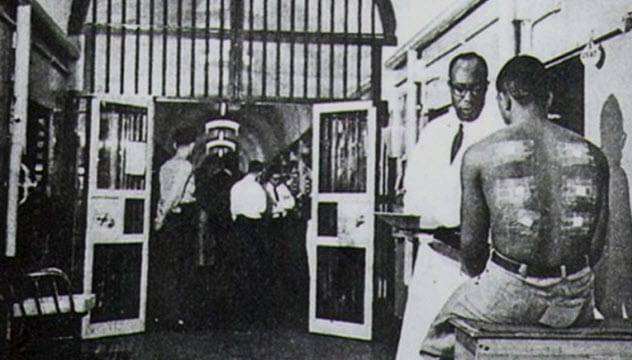
The phrase “acres of skin” is exactly what Dr. Albert Kligman admitted to thinking when he entered the walls of Holmesburg Prison in Pennsylvania. The prisoners were his new test subjects.
His experiment? To test mind-altering drugs and weapons of war on the prison population.
Yes, this was legalized torture in small degrees that both the US military and 33 different corporations had funded. It often included applying small amounts of poisonous substances onto or into the skin of patients.
The military purpose of one experiment was to determine the minimum dose of a drug needed to render at least 50 percent of a population impotent. The tests at Holmesburg Prison were nightmarish. Even the more harmless substances tested, such as toothpaste and deodorant, were torturous because Kligman would have the application sites on the patients biopsied and observed.
These experiments lasted from 1951 to 1974. They produced a slew of information that led to advancements in many of the products we use today, especially with respect to skin care.
Ever notice that many topical creams and other products contain very small amounts of active ingredients? These tests determined the harmful amounts and narrowed them down to the appropriate doses.[8]
Dr. Kligman has over 500 publications and thousands of citations by others in subsequent works today. Yet again, the questions remain: At what cost? Did the ends justify the means?
2 Blood Substitute

Sometimes, medical advancements come in the form of telling us exactly what not to do. Such is the case with the controversy surrounding a company called Northfield Laboratories and their ethics in administering a product called artificial blood.
In the 2000s, Northfield traveled to cities and towns and began informing the residents about the company’s new product, which was artificial blood. It was a blood substitute that didn’t carry the risks, such as disease, of actual blood transfusions and could also be given to people with religious objections.
Then Northfield was backed by the FDA in conducting a no-consent study. As their unwitting test subjects, the company used trauma patients who were incapable of consenting to receive the blood product. An alarming 13.2 percent of the blood substitute patients died as compared to the 9.6 percent death rate with the saline control group.
The study was a complete disaster. At a tragic cost in human lives lost, the researchers learned that artificial blood may mimic human blood, but a lot of work and lab testing needs to be done before artificial blood can come close to performing the same functions as actual blood.[9]
1 Syphilis
1946–1948
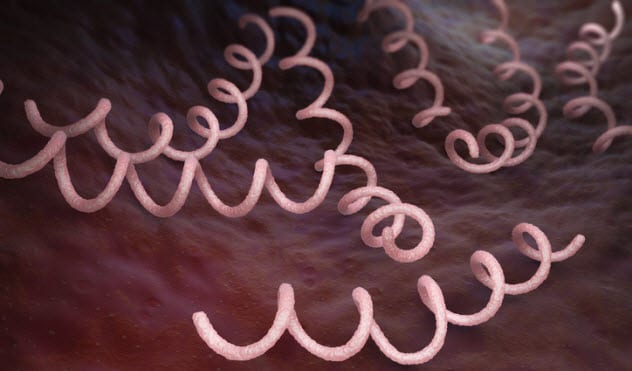
While the Tuskegee study was ongoing, another experiment involving syphilis was conducted in Guatemala. In 1946, we had penicillin, which was known for its strength as an antibiotic, and we had syphilis, a curiously difficult disease to treat. Researchers decided to determine the effectiveness of using penicillin in syphilis cases.
They came up with a horrible idea to make this happen. US researchers infected unsuspecting people in Guatemala with the bacteria which causes the disease. Some of the victims were prostitutes, the mentally handicapped, prisoners, and even orphaned children.
The researchers’ methods were particularly gruesome. They poured the syphilis bacteria into the penises of men or slyly sneaked it into something that would be applied to the skin of individuals who had open wounds. They intentionally infected people to observe the effects of the treatment.
Fortunately for some, the penicillin worked. But what about the control group?
This particular experiment taught us much in how to use penicillin in conjunction with things like condoms to control the spread of the disease.[10] But again, those results came at a tragic cost due to the unethical nature of the methods employed.
Here’s a fun little one on unethical, nonconsensual medical tests and experiments which ultimately led to knowledge and advancements in the medical field. Sometimes, those advancements were knowing exactly what not to do.
Read more about strange and suppressed medical treatments on 10 Suppressed Alternative Medical Treatments and 10 Really Weird Chinese Medical Treatments And Their Effects.








